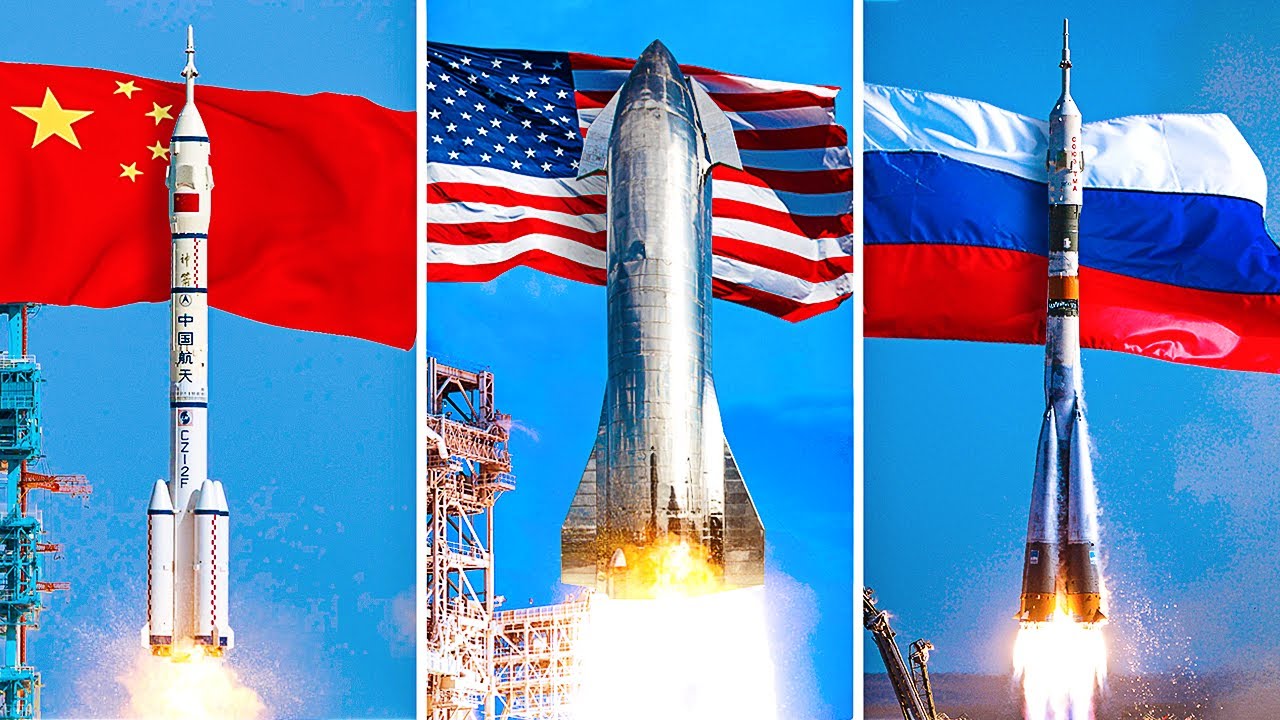Military Technology Showdown: China, Russia, and the U.S. Race for Space Supremacy
As of January 20, 2025, the global landscape of military technology is undergoing a dramatic transformation, particularly in the realm of space warfare. The competition among China, Russia, and the United States has intensified, with each nation striving to establish dominance in what is increasingly viewed as the next frontier of military conflict. This blog explores the current state of affairs and how these three powers are shaping the future of space supremacy.
The Importance of Space in Modern Warfare
The global space economy is projected to reach an astonishing $1.8 trillion by 2035, reflecting the increasing significance of space assets for national security and daily life. Satellites play a critical role in communication, navigation, weather forecasting, and military coordination. Disabling these satellites could effectively paralyze a nation's military capabilities without firing a single shot on Earth.
This reliance on space assets creates both opportunities and vulnerabilities for powerful nations. As they develop capabilities to attack enemy satellites, they must also invest in protecting their own assets in space. This dual focus on offense and defense points to one inevitable conclusion: weapons in space are becoming a reality.
The Call for Space Weapons
General Steven Whiting, head of U.S. Space Command, has emphasized the necessity for the U.S. to develop "space fires," indicating a clear intention to establish weapon systems designed for space operations. In 2024 alone, the U.S. allocated $29 billion to the Space Force and $27.2 billion to NASA, totaling over $56 billion for space-related military initiatives. This budget exceeds the entire European Union's spending on space in the same year.
As tensions rise among these global powers, it is clear that developing advanced military technology is paramount for maintaining superiority.
China's Advancements in Military Technology
China has made significant strides in its military technology related to space warfare. Reports indicate that China possesses ground-based laser systems capable of targeting objects over 60 miles away in space. Additionally, researchers have developed the Relativistic Kinetic Amplifier (RKA)—a directed energy weapon that can jam or destroy satellites using powerful wave bursts.
These advancements reflect China's ambition to challenge U.S. dominance in space warfare. With hypersonic missiles like the DF-17 and advanced satellite systems, China is rapidly becoming a formidable player in this new theater of conflict.
Russia's Strategic Position
Russia is not far behind in this race for space supremacy. The country has been investing heavily in its military capabilities, including satellite technology and anti-satellite weapons. Russia's development of advanced missile systems poses a significant threat not only to its adversaries but also to global stability.
The combination of Russian military technology with its strategic partnerships enhances its position in this competitive landscape.
The U.S. Response: A Multi-Domain Approach
In response to these developments, the U.S. is investing heavily across multiple military domains:
- Air Power: $61 billion is allocated for continued development within the Air Force.
- Sea Power: $48 billion is designated for naval advancements.
- Land Power: $13.9 billion focuses on modernizing Army and Marine Corps equipment.
- Nuclear Capabilities: $37.7 billion aims to enhance command and control systems related to nuclear forces.
These investments reflect a commitment to maintaining a robust military presence capable of countering emerging threats from adversaries like China and Russia.
The Future of Military Technology in Space
As we look toward the future, it is clear that space will play an increasingly critical role in military strategy and operations. The race for supremacy among global powers could lead to unprecedented levels of conflict beyond our atmosphere.
With nations ramping up their investments in space warfare technologies, the potential for conflict increases significantly. The implications for global security are profound as countries seek to establish dominance over this vital domain.
Conclusion
The race for space supremacy among China, Russia, and the United States represents a pivotal moment in the evolution of military technology. As these nations invest heavily in advanced systems designed to neutralize each other's satellites and other space assets, we must consider how this competition will shape future conflicts.
Will we see an escalation in arms development or will diplomacy prevail? As we continue to monitor these developments, one thing is certain—the future of warfare will be heavily influenced by our actions in space.
Stay tuned for more insights into military technology as we explore these vital advancements!
